Parken Stadium: FC Copenhagen / Denmark
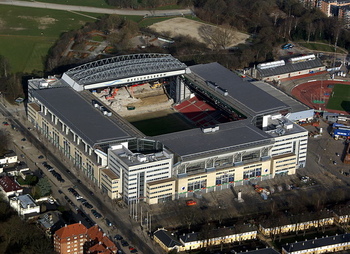
By Thue C. Leibrandt (Own work) [CC BY-SA 3.0], via Wikimedia Commons
Parken Stadium, known simply as Parken to supporters, took two years to build and was officially opened in 1992, the same year that FC Copenhagen was formed. It was known for a long time as Telia Parken after a deal was agreed between the stadium’s owners and a the Danish communications company Telia. The agreements said that high speed Wi-Fi would be provided for any and all spectators who attended the stadium for any event for a period of seven years. It not only ensured a monetary return for the club but also resulted in Parken being one of the most technologically advanced stadiums in Denmark. However, the Telia deal ended in 2020.
As well as FC Copenhagen, the Denmark international football team also play their matches at the stadium. This is because the stadium was renovated by a company who made a deal with the Danish Football Association that the old stadium would be knocked down and re-built as long as there was a promise that all Danish national matches would be played in Parken for fifteen years. The reconstruction of the ground cost 640 million Danish kroner to complete and in 1998 the company sold the stadium to FC Copenhagen’s parent company for 138 million kroner, meaning that Parken Sport & Entertainment now own both the team and the ground.
Stats
| Parken Stadium Stats | |
|---|---|
| Year Opened | 1992 |
| Capacity | 38065 |
| Average Attendance | 14523 |
| Record Attendance | 42083 (Denmark v Sweden (2007)) |
| Pitch Size | 105 x 68 (7140) |
| Former Name | Parken |
| Owner | Parken Sport & Entertainment |
| Clubs Hosted | Denmark national football team, F.C. Copenhagen |
| First Fixture | Denmark v Germany (09/09/1992) |
| Denmark Stats | |
|---|---|
| Year Founded | 1889 |
| Nickname | De Rød-Hvide (The Red and White), Olsen-Banden (The Olsen Gang), Olsens Elleve (Olsen's Eleven), The Red and White Football Aces |
| Rivals | Sweden, Iceland |
| Previous Stadiums | KBs baner, Idrætsparken |
| Kit | Red & White (Home) / White & Red (Away) |
| Training Ground | Nummer 10 |
| Team Owner | Danish FA |
| Record Goalscorer | Jon Dahl Tomasson (52) |
| Record Appearances | Peter Schmeichel (122) |
| FC Copenhagen Stats | |
|---|---|
| Year Founded | 1992 |
| Nickname | Byens Hold (The Team of the City), Løverne (The Lions) "Byens Drenge" (The Boys of the City) |
| Rivals | Brøndby IF |
| Kit | White & Blue (Home) / Black, White & Blue (Away) |
| Training Ground | Nummer 10 |
| Shirt Sponsor | Unibet |
| Team Owner | Parken Sport & Entertainment |
| Record Goalscorer | César Santin (84) |
| Record Appearances | William Kvist (322) |
Parken Stadium Photos
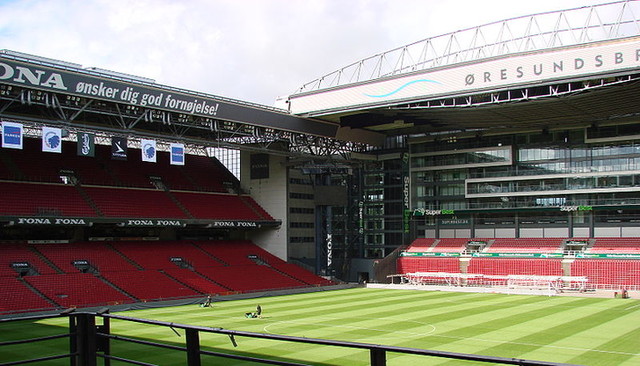
By Pathfinder77 (Own work) [CC BY-SA 3.0]
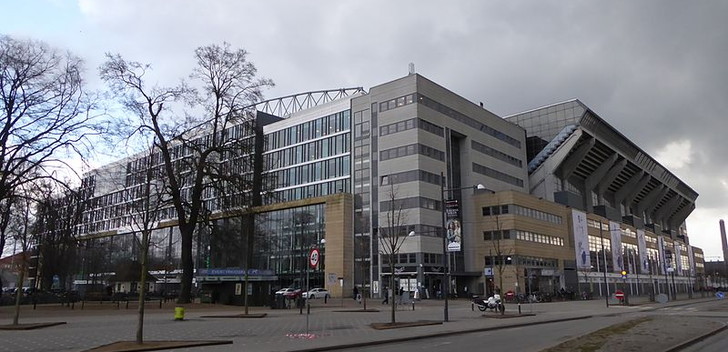
By Leif Jørgensen (Own work) [CC BY-SA 4.0]
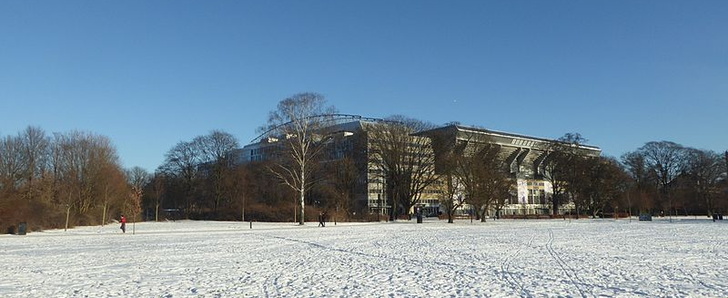
By Leif Jørgensen (Own work) [CC BY-SA 4.0]
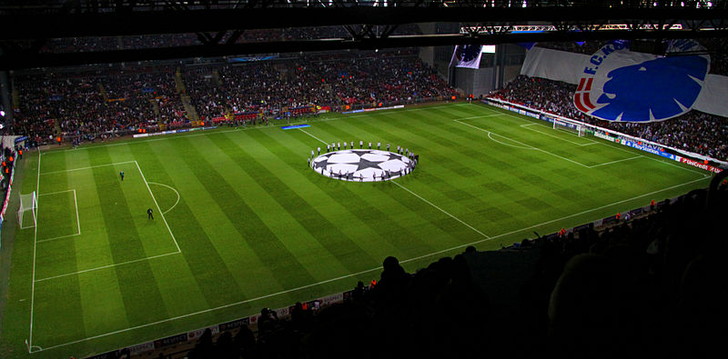
By Guillaume Baviere (Flickr: 2013-09-17) [CC BY-SA 2.0]
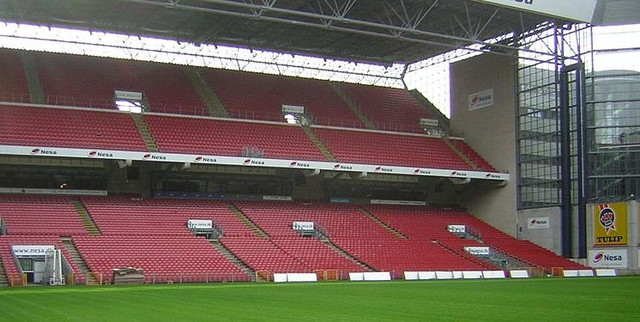
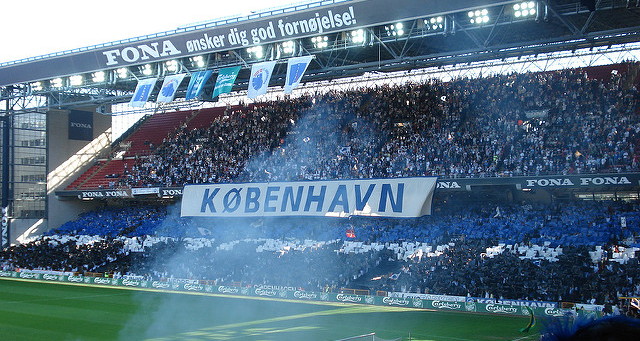
Benno Hansen / Flickr.com
Parken Stadium Seating Plan and Where to Sit
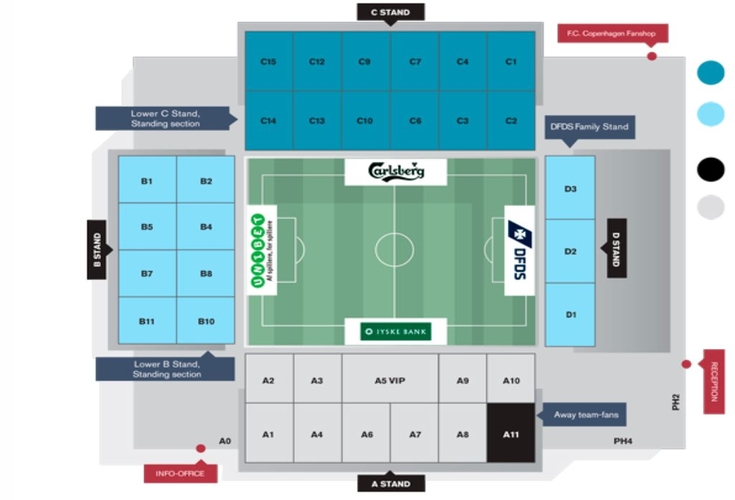
Parken is built in the ‘English Style’ of having a stand on each side of the pitch. This is a slightly more old-fashioned approach than the ‘European Style’ of a bowl of continuous seating surrounding the playing surface. Here’s some information on each of the stands:
- The North Stand – This stand contains the smallest section of seating owing to the numerous hospitality boxes that were installed on the second-tier of the stand when it was renovated in 2009. The lower tier is split between the away section and the family stand.
- The East Stand – Running along the side of the pitch, The East Stand is considered to be the stadium’s main stand. It houses the dugouts, the players tunnel and other facilities. It has two tiers, with the upper-tier often closed if the attendance level is going to be small.
- The South Stand – This two-tier section of the ground is known locally as the ‘fan zone’. It is only open to supporters who are older than fifteen and consequently is one of the most boisterous parts of the entire stadium on a match day. Standing behind one of the goals, the lower tier fills up before the higher one.
- The West Stand – The West Stand is very similar to The East Stand in design. There are two tiers of seating separated by corporate boxes.
Denmark Ticket Prices
The situation is slightly more complicated for Denmark international matches that are hosted at Telia Parken. The prices for international games are often set by the governing body of the competition you’re going to see. That means that if it’s a European Championship qualifying match then UEFA will decide on how much tickets should cost, whilst if it’s a World Cup qualifier then FIFA will decide. Keep your eye out for the specific matches and you’ll be able to find out nearer to the time how much you’ll likely have to pay.
How To Get Denmark Tickets
Much like with the prices, it’s often the governing body of the competition that decides how tickets for international matches will be sold. If it’s for a European Championship game then UEFA will have their own official way of buying tickets, whilst FIFA will have another way entirely of buying World Cup tickets. If it’s a friendly match then the Danish Football Association will be the ones to approach for tickets. Find out who is organising the match that you want to see and move forward from there.
Where to Buy
FC Copenhagen Ticket Prices
Ticket prices for FC Copenhagen matches are relatively easy to understand. How much you’ll pay really depends on how old you are and where you’d like to sit. If you’re an adult and would like to be in a normal stand then your ticket will cost 185 DKK, whilst children will have to pay 95 DKK. If you’d rather sit in the Family Stand then it will be 135 DKK and 70 DKK respectively. There is a 40 DKK fee added if you choose to buy your ticket from the club on the day and another 50 DKK fee added if the visiting team is the club’s long-standing rival Brondby IF.
How To Get FC Copenhagen Tickets
Without doubt the best way of getting tickets for Copenhagen games is via the club’s official website. You’ll be able to see where about in the ground your ticket is as well as have more of an idea of the different prices available to you. If you speak Danish then you can try to call the club directly and you can also buy tickets on the day of the game from the stadium itself. As we’ve said, though, you’ll pay more for the privilege of doing that, which is why buying them online in advance of the match is always recommended.
Where to Buy
Getting To Parken Stadium
Copenhagen is the capital of Denmark and as such is reasonably easy to get to. Here are some of the usual journeys you might consider making to the city and then the stadium:
Train – Getting the train from London St. Pancras International to Copenhagen will take you between fourteen and twenty hours, with numerous stops along the way. You’ll head to Brussels first of all, before aiming for Dortmund via Köln. Dortmund will lead you to Hamburg from where you can get your final train directly to Copenhagen itself. From there you can get another train to Nordhavn Station which is about twenty minutes walk from the ground or you can walk directly in less than an hour.
Bus – There are three bus stops outside the stadium that are all served by the numbers 14 and 95N buses.
Car – If you’re in the centre of Copenhagen then you’ll want to take the Bernstorffsgade towards Tietgensgade then head to Stormgade. From there take Vindebrogade to Holmens Bro in København K before getting on the O2 to Trianglen in København Ø. Then take Øster Allé and you’ll see the ground in front of you. Keep your eye out for signs, too.
By Air – If you’re heading to Copenhagen then the best airport to aim for is Copenhagen Airport itself. It’s only 8 km from the centre of the city and there excellent transport links too.
Taxi – Getting a taxi from Copenhagen Train Station to Parken will set you back something in the region of 150 Danish kroner for a journey that will take about fifteen minutes.
Parking Near Parken Stadium
There is a car park at the ground but it’s reserved for those with VIP passes. You can try to park on the roads nearby but there is limited access to them on match days. There is a residential area near Fælledparken but your best bet is to park in the city centre and head out.
Useful Resources
Parken Stadium Hotels
As the capital of Denmark Copenhagen is used to coping with a large number of visitors every year. A word of warning is that it isn’t a cheap city to stay in. Here are some of our favourite hotels for you to consider, though:
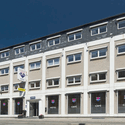
CABINN Express - £80+
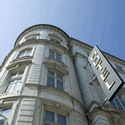
Ibsens Hotel - £90+

Imperial Hotel - £110+
Pubs and Bars Near Parken Stadium
FC Copenhagen’s main sponsor is Carlsberg, so that should give you some idea of the sort of thing you’re likely to experience if you go for a pre-match pint in the city centre. Here are some of the bars to keep your eyes peeled for:
The Globe Irish Pub
Pub Og Sport
Engelsk Pub Vesterbrogade 2 B ApS
Facilities
The stadium was renovated in 2009 so it’s reasonable to suggest that the facilities are pretty good at Parken. We’ve already mentioned the Wi-Fi coverage and the fact that are in charge of it means you should be ok on that front. That said, the stadium was very much built with function in mind over form, so don’t be expecting it to be one of the most luxurious stadiums you’ve ever attended.
Hospitality
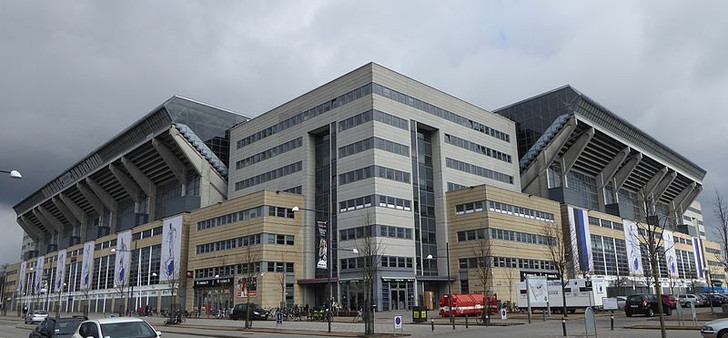
There are two main sections of hospitality seating in Parken. The most obvious is at the Northern end of the ground where there are a number of hospitality boxes and lounges that look down over the entire pitch. The second is the row of hospitality boxes that separate the two tiers in the Eastern and the Western stands. The option that you’ll go for will depend entirely on what it is that you hope to experience on your match day in the home of FC Copenhagen and the Denmark national side.
Private Hire
As with most grounds around Europe, FC Copenhagen know that allowing their facilities to be hired out on non-match day is a good money making scheme. If you’re interested in knowing exactly what you can and can’t do at Parken then your best bet is to contact the club directly and ask them. Conferences, events, meetings and presentations are the sorts of things that clubs can accommodate easily enough.
Stadium Tours & Museum
There are no regular tours of the stadium but they are available twice a day during school holidays. You can also arrange them yourself. Simply send an email to [email protected] and tell them how many people there are in your group, when you would like to do a tour and so on. They will let you know when tours are available and how much they will cost. At the time of writing there is no museum at the ground.
About Denmark
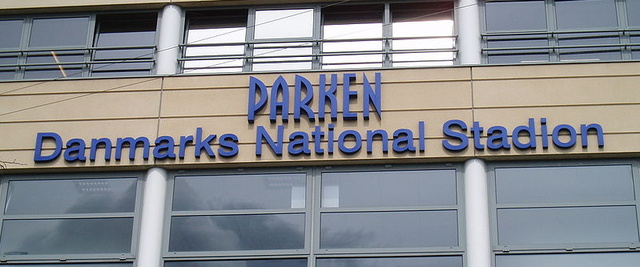
Denmark had a reasonably successful start to their time on the international field, winning the 1906 Intercalated Games before finishing as Silver medallists in both the 1908 and the 1912 Olympic Games. Unfortunately the Danish FA considered the national side to be an amateur team and internationals were not allowed to become professionals at clubs in foreign leagues. Because of this Denmark did not qualify for a World Cup tournament until 1986. That was in spite of the fact that they picked up another Silver medal in the 1960 Summer Olympics.
Denmark have been solid performers in international competitions ever since they started to enter them in the mid-1980s. Without question their best performance came about in 1992 when they beat the defending European champions the Netherlands in the semi-final of the European Championships held in Sweden and then the World Cup winners Germany in the final to claim their first international trophy of note. In 1995 they beat Argentina to win the Confederations Cup. In 1998 they made it to the quarter-finals of the World Cup, losing out to Brazil.
About FC Copenhagen
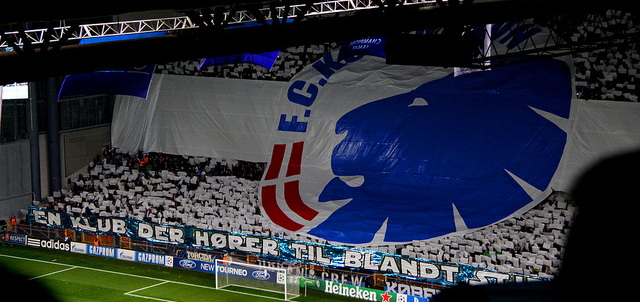
Football Club Copenhagen was only formed in 1992, so it’s one of the youngest clubs when it comes to European top-flight teams. It was formed out of two former clubs; Kjøbenhavns Boldklub, who had been Danish champions fifteen times, and Boldklubben 1903, who had won the division seven times. As the new side they have since gone on to win the Danish Football Championship 13 times and the Danish Cup 8 times, making them the most successful club in Denmark at the time of writing. When they play their fierce rival Brondby IF the game is known as the New Firm, a play on Scotland’s Old Firm match.
Despite the relative youth of the club it is actually steeped in tradition. Kjøbenhavns Boldklub was the oldest club in continental Europe, formed as it was in 1876. Whether it is this link to Danish footballing tradition or the club’s success since its formation, Copenhagen boast one of the best attendances in all of Scandinavia. The club’s official fan club has over 20,000 members with many unofficial ones also claiming numerous members.
Parken Stadium History
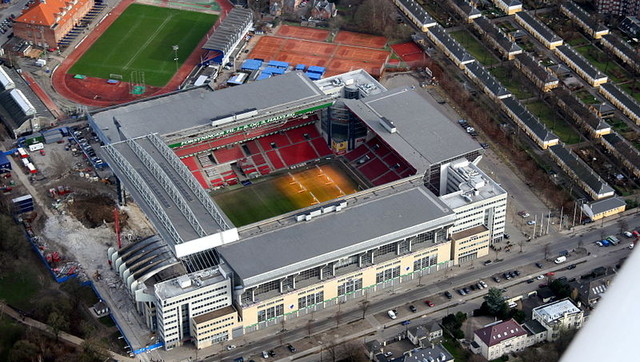
Built in the Indre Østerbro region of Copenhagen on exactly the same site as the former national stadium Idrætsparken, Parken was built between 1990 and 1992. Three out of the four original stands were knocked down and completely re-built at a cost of about €85 million. Parken is a four star stadium according to UEFA’s ranking, meaning that it is too small to host a European Cup final but was able to host the Cup Winners’ Cup final in 1994. It was renovated in 2009 and will be used as a venue for the 2020 European Championships when the tournament is held in thirteen different countries to celebrate the competition’s 60th birthday.
The stadium has a capacity of 38,065 when it is an all-seater venue for football. It can also be used to host concerts and the record attendance of 60,000 was set in 1997 when Michael Jackson performed his HIStory World Tour in the ground. It hosted the Eurovision Song Contest in 2001 and bands such as Coldplay, Take That, AC/DC, The Black Eye Peas and the Pet Shop Boys have all performed there at various times. When the Eurovision Song contest was due to be held in the ground it was decided that a retractable roof should be added to make it a more enticing venue for the world’s biggest acts.
Future Developments
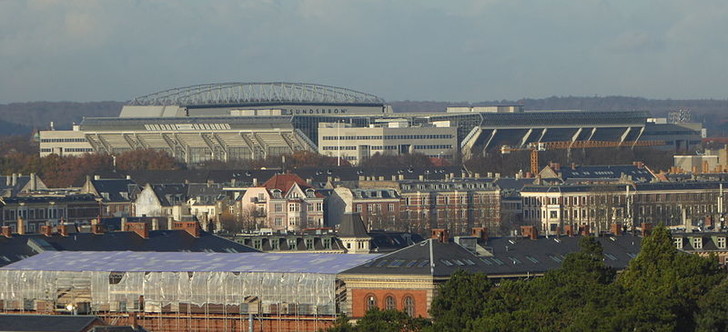
FC Copenhagen rarely sell-out their games, so it’s unlikely any major changes will be made to the stadium in the foreseeable future.
